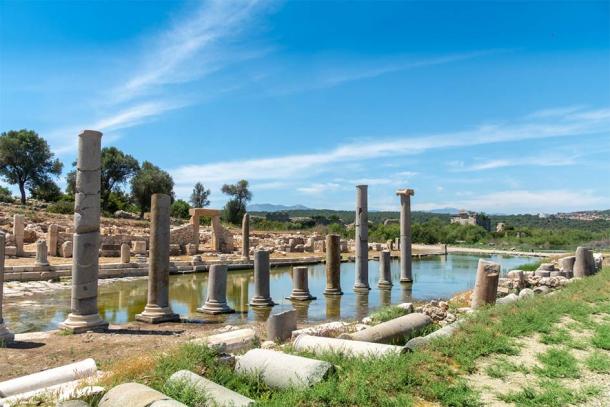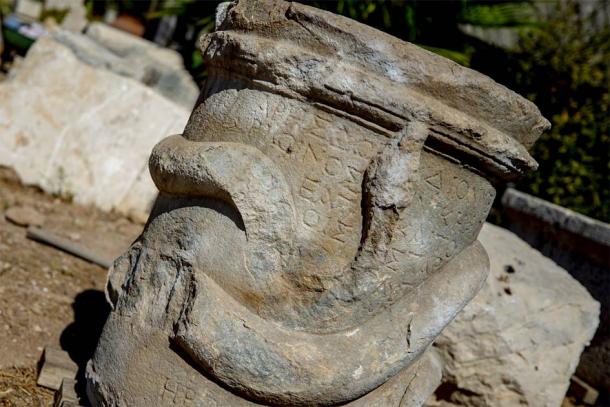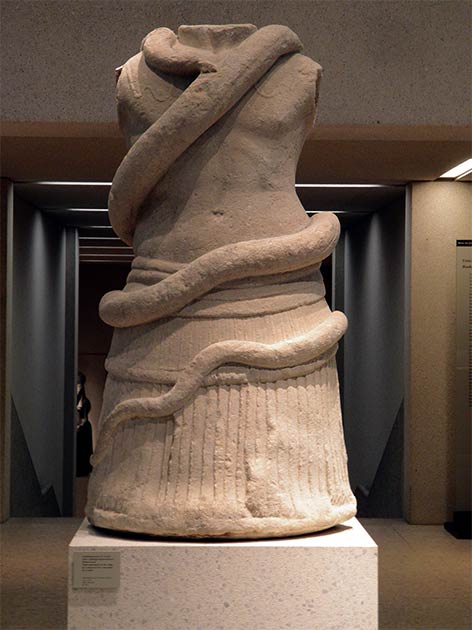Snakes are one of the most popular and feared symbols of ancient civilizations. Recently, a mysterious Greek snake altar has been discovered in Turkey, and it has caused considerable excitement in the archaeological community. The altar dates back over 2000 years and was found in the long-abandoned city of Patara. The Greek snake altar find is probably connected with the worship of underground gods and is providing new insights into the religion and rituals of the Graeco-Roman world (332 BC -395 AD).
The Greek snake altar was found during an excavation of the city of Patara, in Antalya Province, by a team of Turkish archaeologists. This was the main port and commercial center of the historical region of Lycia, which was inhabited by Luwian-speaking peoples in the Bronze Age . As a Hellenistic city it was the capital of the Lycian League, an alliance of Greek city-states. Patara became part of the Roman Empire and remained an important city until the 13 th century AD. AA News reports that it is “considered the cradle of civilizations” because it was home to so many diverse cultures. What’s more, Patara has a well-known link to the origins of Christmas !

The ancient ruins of Patara where the almost perfect marble Greek snake altar was found recently. (Scottiebumich / Adobe Stock )
This Is The First Greek Snake Altar Found In Patara
When the experts were working near the Roman walls and baths of Patara they came across something amazing. One of the leaders of the dig, Dr Mustafa Koçak, of Antalya Bilim University, is quoted by Yenisafak.com as saying that “We found a snake-shaped altar for the first time in Patara.” The Patara Greek snake altar, carved from marble, is cylindrical and in excellent condition. It depicts a snake apparently winding itself around the altar, which also is engraved with Greek letters .

A closeup of the Greek snake altar recently found in Patara, Turkey showing the Greek writing on the altar more clearly. ( AA)
The snake on the altar is very similar to the snake motifs that archaeologists often come across in the ruins of Patara. The ancient people who inhabited the city were likely familiar with these serpents. Dr Koçak told AA News that the local snakes are “very harmless.” Serpents are considered to be sacred in many cultures across the globe.
An Altar To The Gods Of The Underworld
The altar is about 2000 years old and dates to Patra’s period of Roman rule. Dr Koçak told AA News they “think the snake symbolizes the underground gods.” These were the deities who lived in the realm of the dead. They were also associated with agriculture. The people of Patara at this time were polytheistic and worshipped a wide range of gods. However, the underground gods would have been among the most important.
It is believed, based on documentary sources, that offerings were made at the altar. These would include foodstuffs such as bread and meat. AA News quotes Dr Kocak as saying that these offerings were “made on this altar to calm the underground gods.” The ancient people of Patra probably made sacrifices at the altar to appease the powerful underground deities. If they were angry it was believed that they could cause disaster.
The Greek Snake Altar May Also Relate To Funerary Rituals
There is also the possibility that the Greek snake altar was related to funerary rituals, as the underground gods ruled over the dead. The altar may have been used in rituals to honor the dead during festivals. And it may have been used in ceremonies to secure the favor of the underground gods and thus ensure that they looked favorably on the deceased.
This type of Greek snake altar is not unknown in this part of Turkey, but it is a first for Patara. Koçak told Archaeology News Network that “Similar discoveries were made in some ancient cities in Muğla.” In 2018, archaeologists found archaeological ruins and mosaics in the Mugla area, which were confirmed to belong to the villa of the Greek fisherman Phainos, who was the richest and the most famous fisherman of his time.

A tomb monument in the shape of a torso entwined by a snake, 1st century BC, Milet southwestern Turkey, which clearly links the snake with funerary practices in the Graeco-Roman period of Turkey, as the Greek snake altar of Patara does. (Carole Raddato from FRANKFURT, Germany / CC BY-SA 2.0 )
The Greek snake altar discovery is providing researchers with insights into how Patara interacted with the wider region and that Patara shared key similar religious practices with its neighbors. Archaeology News Network quotes Dr Koçak as saying that “this altar depicts the relations of people in Patara with the outside world.”
The Patara Greek snake altar has been removed from the site for safekeeping. It will likely be put on display at some future date. Excavations are continuing at Patara and archaeologists are hoping to learn more about this “cradle of civilizations” and the many cultures who lived there during the Graeco-Roman period.
Top image: The first Greek snake altar ever found in the ancient city of Patara, Turkey. Source: Mustafa Ciftci / AA
By Ed Whelan
 RSS Feed
RSS Feed















 October 21st, 2020
October 21st, 2020  Awake Goy
Awake Goy  Posted in
Posted in  Tags:
Tags: 













